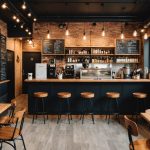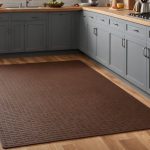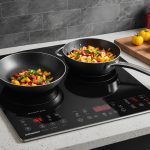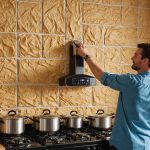Crafting an Inclusive, Wheelchair-Accessible Bar Environment: Essential Tips
Creating a bar environment that is both inclusive and wheelchair-accessible is not just a legal requirement, but a fundamental step towards ensuring that all patrons, regardless of their abilities, can enjoy a welcoming and comfortable experience. Here’s a comprehensive guide to help you achieve this goal.
Understanding the Importance of Accessibility
Before diving into the specifics, it’s crucial to understand why accessibility is so important. The Americans with Disabilities Act (ADA) and other similar regulations around the world are designed to prevent discrimination and promote equal opportunities for individuals with disabilities. By making your bar accessible, you are not only complying with the law but also expanding your customer base and enhancing the overall experience for all patrons.
Also read : What are the best practices for creating a cozy atmosphere in a UK bar?
Designing an Accessible Entrance and Layout
Ensuring Wheelchair-Friendly Entrances
The first step in creating an inclusive bar environment is to ensure that the entrance is wheelchair-friendly. Here are some key considerations:
- Wide Doorways and Ramps: Make sure the doorways are at least 32 inches wide to allow easy passage for wheelchairs. If your bar is not on the ground floor, consider installing a ramp with a gentle slope, non-slip surface, and handrails on both sides[2].
- Automatic Doors: Automatic doors can be a significant help, especially for individuals who may struggle with manual doors. Ensure these doors have sensors to prevent closing when an obstruction is detected[2].
Clear Pathways and Maneuverability
Inside the bar, it’s essential to maintain clear pathways and ensure there is enough space for wheelchairs to maneuver.
Have you seen this : What are the most effective ways to showcase your chef’s talents in a restaurant setting?
- Clear Floor Space: Ensure there is a minimum of 60 inches of clear floor space to allow for a turning radius. This is crucial for wheelchair users to navigate comfortably[3].
- Obstruction-Free Hallways: Keep hallways and passageways free of obstacles. Furniture or decorative items should not block access routes, and there should be sufficient space for wheelchairs and walkers to move without obstructions[2].
Key Elements of Inclusive Design
Accessible Seating and Tables
Inclusive seating is vital for creating a welcoming environment.
- Accessible Seating Options: Provide stable seating with armrests in the waiting area and within the bar. Ensure the seat height is around 18 inches to accommodate clients who may need extra support[1].
- Adjustable Tables: Use adjustable tables or ensure that there are tables at different heights to accommodate both wheelchair users and those who prefer to stand or sit at higher tables.
Accessible Restrooms
Accessible restrooms are a critical component of an inclusive bar environment.
- Wheelchair-Accessible Stalls: Ensure at least one stall is designed for wheelchair users, with a minimum size of 60 inches by 60 inches. The door should open outward, and there should be sufficient space to transfer from the wheelchair to the toilet. Install grab bars for added support[2][3].
- Sink Height and Faucet Controls: Sinks should be positioned at a lower height (around 34 inches) with clearance underneath for wheelchairs. Faucets should be easy to use with lever or sensor-operated controls[3].
Communication and Technology for Inclusivity
Accessible Communication
Ensuring that your communication methods are accessible is crucial for inclusivity.
- Website Accessibility: Make sure your website is ADA-compliant with features like alt text for images, video captions, and user-friendly fonts. This ensures that individuals with visual impairments can navigate your site easily using screen readers[1].
- Signage and Visual Cues: Use clear and well-placed signage to help clients navigate your space. Include information about restroom locations, emergency exits, and other essential areas. Ensure the signage is readable for individuals with visual impairments, using large text and good colour contrast[1].
Assistive Technologies
Incorporate assistive technologies to enhance the experience for individuals with disabilities.
- Audio and Visual Indicators: Use both auditory and visual cues to announce events, specials, or important information. This helps individuals with visual or hearing impairments stay informed[2].
- Staff Training: Train your staff to be sensitive to the needs and concerns of clients with disabilities. This includes understanding different types of disabilities and knowing how to assist clients accordingly[1].
Creating an Inclusive Atmosphere
Lighting and Colour Contrast
Good lighting and colour contrast are essential for creating an inclusive atmosphere.
- Good Lighting: Ensure your bar is well-lit and free from glare, which can be uncomfortable for those with certain visual conditions. Use dimmer switches and a variety of lighting sources to create adjustable lighting[1].
- Colour Contrast: Use good colour contrast in your decor to help individuals with visual impairments. This includes using contrasting colours for text and background to make signs and menus easier to read[1].
Inclusive Events and Activities
Make sure your events and activities are inclusive for all patrons.
- Accessible Events: When hosting events, ensure that the venue is accessible and that there are accessible seating options available. Provide information about the accessibility features of the event on your website and promotional materials[1].
- Diverse Activities: Offer a variety of activities that cater to different needs and preferences. For example, having a quiet area for those who may find loud environments overwhelming can be very welcoming.
Practical Tips and Examples
Here are some practical tips and examples to help you create an inclusive and wheelchair-accessible bar environment:
Checklist for Accessibility
Here is a detailed checklist to ensure your bar is accessible:
- Entrance:
- Wide doorways (at least 32 inches)
- Automatic doors with sensors
- Ramps with gentle slopes and handrails
- Layout:
- Clear pathways (at least 36 inches wide)
- Obstruction-free hallways
- Clear floor space for turning (at least 60 inches)
- Seating and Tables:
- Accessible seating options with armrests
- Adjustable tables or tables at different heights
- Restrooms:
- Wheelchair-accessible stalls with grab bars
- Sinks at lower heights with clearance underneath
- Lever or sensor-operated faucets
- Communication and Technology:
- ADA-compliant website with alt text and video captions
- Clear and well-placed signage
- Audio and visual indicators
- Staff Training:
- Training on assisting clients with disabilities
- Understanding different types of disabilities
Example: The Inclusive Bar
Imagine walking into a bar where the entrance is wide and automatic, with a ramp leading to the door. Inside, the pathways are clear, and the seating is adjustable. The restrooms are wheelchair-accessible with grab bars and lower sinks. The staff is trained to assist clients with disabilities, and the website is ADA-compliant.
“This bar is a game-changer for me,” says Sarah, a wheelchair user. “I can finally enjoy a night out with friends without worrying about accessibility issues. The staff is always helpful, and the layout is so well thought out.”
Ongoing Maintenance and Audits
Ensuring ongoing accessibility is crucial for maintaining an inclusive environment.
Regular Audits
Conduct regular safety audits and maintenance checks to ensure all accessibility features are in good working order. This includes checking elevators, ramps, handrails, and other critical components for wear and tear or malfunctions[2].
Feedback Mechanisms
Implement feedback mechanisms to allow patrons to provide suggestions on how to improve accessibility. This could be through surveys, comment cards, or direct communication with staff.
Creating an inclusive and wheelchair-accessible bar environment is a multifaceted task that requires careful consideration of various elements. From designing accessible entrances and layouts to ensuring inclusive communication and technology, every detail counts. By following these tips and continuously improving your space, you can create a welcoming and comfortable experience for all patrons, regardless of their abilities.
As John, a bar owner, notes, “Making our bar accessible has not only been the right thing to do, but it has also opened up our business to a wider audience. It’s a win-win for everyone involved.”
By prioritizing accessibility and inclusivity, you are not just complying with regulations; you are creating a space where everyone can enjoy a great experience. So, take the first step today and start crafting an inclusive, wheelchair-accessible bar environment that welcomes all.











